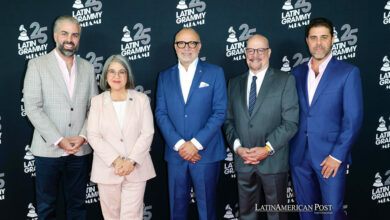Women on the money – Britain’s Queen Elizabeth, America’s Harriet Tubman
Listen to this article
Having a diversity of figures held up as role models, however, is also hugely important and can have a much wider impact

British 10-pound banknote and Chinese 100-yuan banknotes are seen in a picture illustration, in Beijing, China, January 21, 2016. REUTERS/Jason Lee
As the United States announced the first female face on its currency in almost a century, the woman who appears on all of Britain’s was turning 90.
On the surface, it seems strange – perhaps even wrong – to compare the UK’s longest reigning hereditary monarch, Elizabeth II, to Harriet Tubman, the escaped slave turned fighter, spy and campaigner who died in 1913, herself nine decades old.
Until she was announced as the new face on the $20 bill, Tubman was largely unheard of outside the United States – indeed, as a Brit, I had barely come across her story. A woman who started life as property before helping other slaves flee the South. Operating as an armed scout for Union forces during the Civil War, she also has a claim to be one of the first American women to command troops in combat.
Queen Elizabeth, of course, has never faced anything quite like that – although she did ride out the German bombing of London as a teenager before serving in uniform, making her the last remaining head of state to also be a World War II veteran. Like Tubman, in some respects she represents a much larger generation – including all races and genders – that sacrificed a great deal to produce the imperfect but unquestionably better world we have today.
Faces on bank notes are unavoidably tokenistic. Even the plethora of white men often find themselves representing something much broader than themselves – Isaac Newton and Charles Darwin, for example, both featured on UK notes, were in some ways a simplistic shorthand for “science”.
Having a diversity of figures held up as role models, however, is also hugely important and can have a much wider impact.
Every time we see and acknowledge that a person of different gender, race, sexuality, disability or even just background can achieve something new, that makes the world a more accepting place. It shapes the understanding of everyone else in society.
The presence of women on currency and in other noteworthy places makes a very blunt point. It says that women – and in the case of Tubman, also people of color – are human, equal, have agency and can be worthy of authority and respect. That shouldn’t be a radical statement, yet sometimes it still feels like one.
The complete absence of anyone representing women or African-Americans on currency over the last century also sends a message, I fear – and a much less positive one.
That’s something I wasn’t necessarily aware of until 10 years ago. I was a straight, able-bodied, white Englishman. There wasn’t exactly a shortage of role models who looked a bit like me – quite the opposite.
On Sept. 5, 2006, I was covering the Sri Lankan civil war on its eastern front when my minibus slammed into a tractor. I found myself instantaneously paralyzed from the shoulders down.
Suddenly facing life with a catastrophic disability is a very intimidating thing. In fact, I had several pieces of luck on my side – not least that the then very recent development of voice recognition software allowed me to continue my chosen profession as a journalist. I was also hugely fortunate to be British, with a welfare state that could – just about – allow me to live independently with the support I needed.
Overall, of the potential role models I could find, only physicist Stephen Hawking – so paralyzed by a degenerative disorder he cannot even speak – was notably more disabled than me.
It hasn’t been an easy journey. Still, with hindsight, I think I was very fortunate to already have in mind individuals with serious disabilities who had continued to achieve very considerable things.
The most obvious and directly relevant was BBC security correspondent Frank Gardner. Though shot in the back almost exactly two years before my injury, he relatively swiftly returned to reporting despite largely losing use of his legs.
The practical lessons of his case were somewhat limited – he had the good fortune, after all, to still have use of his arms and hands. The mere fact he was doing it so visibly, however, helped open doors for me. It also provided at least some limited reassurance that somethingmight be possible.
The same went for the variety of other stories I knew of disabled people still functioning valuably within society. Some were from my personal experience, others much further afield. They included RAF pilot Douglas Bader, who had both legs amputated after an air crash before reenlisting for the Battle of Britain, during World War Two, and becoming one of its top aces. Further back in time and on the other side of the Atlantic, deaf-blind activist Helen Keller had shown what was possible with a very different – but in some ways even more challenging – form of impairment.
Both unconsciously and consciously, I was also inspired by other people who had overcome the combination of adversity and diversity, from gay people living their lives openly despite homophobia to the struggles of all races to build a successful post-apartheid South Africa. And, of course, the ongoing battle over centuries of women to be heard and exert influence within society.
And that, I think, is the point – it’s all about having the broadest possible range of stories in your head that reveal what is possible.
A queen may not, at first glance, appear an obvious progressive or feminist icon. Anything Queen Elizabeth has achieved for the position of women in general, she has done as the ultimate insider (although she did once apparently force the King of Saudi Arabia to sit as a passenger in her Range Rover, making the point that women could drive even if they were banned from doing so in his country).
Making serious progress on diversity, I suspect, also requires outsiders taking a much more aggressive stance. For every Barrack Obama working within the system, then needs to be a Malcolm X.
America’s Harriet Tubman is amongst the closest to taking both boxes – an unquestioned iconoclastic activist who also worked with him a more conservative and indeed white dominated chain of command during the Civil War.
Believe me, if you ever wake up “diverse,” that’s the kind of example you are looking for.
Reuters | Peter Apps





